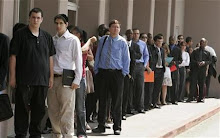 By Michael Jones
By Michael JonesCharleston Daily Mail
Sept. 2, 2005
SAN ANTONIO, Texas - Last Friday, airmen from Charleston's 130th Airlift Wing weren't sure what the future would hold for their base.
Today, they were hauling much-needed supplies and personnel to flood-ravaged New Orleans.
Ten members of the West Virginia Air National Guard flew out of Yeager Airport on Thursday afternoon on a mission that placed them on five different airstrips in 11 hours. Their relief effort to areas affected by Hurricane Katrina is expected to last four days.
The first C-130 flight from Charleston departed Wednesday. Officials expect more in the weeks ahead.
"This is exactly why we didn't want to lose our planes," Maj. David Lester said. "We can help in natural disasters.
"It's a perfect example of us doing what we're trained to do."
After a summer of uncertainty and anxiety for local guard members, the Base Realignment and Closure Commission granted the 130th a reprieve last week. The panel overruled defense planners who had recommended that the unit's planes be stationed at Pope Air Force Base in North Carolina instead of Yeager.
Lester said the operation is similar to what would happen following a terrorist attack in the United States.
First Lt. Todd Perry, the aircraft's co-pilot, said the mission signifies the spirit of the 130th.
"You would have had the same amount of volunteers even if they would have taken away our base," he said. "We were immediately ready to go."
Most crew members weren't told they would be heading out until 10 a.m. Thursday. "I want to get to New Orleans before sunset and get out of there," Maj. Kyle Adams told them.
The crew loaded up their C-130 and lifted off at 2:10 p.m., only to return 30 minutes later because of a malfunctioning cockpit gauge. In less than an hour, they prepped a new plane and were in the air with Wright-Patterson Air Base in Dayton, Ohio, as their destination.
As the C-130 took on fuel, a Boeing 747 in a paint scheme resembling Air Force One pulled to within 300 feet. Lester said the jet is a mobile command post used to direct relief activities. Before anyone deplaned, 20 armed guards cleared a perimeter around the aircraft.
The smaller, prop-driven C-130 has two crew members designated to protect the plane at all costs. The security procedure, called "Raven," is customary in other regions of the world, but is rarely employed within the United States, said one of the onboard cops, Senior Master Sgt. Dennis Heilmann.
 The higher state of security for the Air National Guard reflects the escalating danger in New Orleans, where widespread looting has occurred.
The higher state of security for the Air National Guard reflects the escalating danger in New Orleans, where widespread looting has occurred."It's difficult to comprehend that something like this is happening in the U.S.," Lester said.
The original mission Thursday was to transport doctors and nurses to Louisiana. Those plans changed when the C-130 landed in Dayton at 4 p.m.
Along with two other C-130s from Mansfield, Ohio, the plane from Charleston was ordered to go to nearby Springfield, Ohio, to pick up armed troops. Carrying rifles, shotguns, and flak jackets, 41 Army National Guard soldiers boarded. They were flown directly to the New Orleans Naval Air Station, 10 miles from the city.
Sixty miles from the base, an eerie darkness crept across the night sky. The only glow coming out of the sunken city was lights from rescue helicopters.
Once the plane touched down, the soldiers quickly left the cramped cargo hold where they had spent the past three hours sleeping. They were whisked away and disappeared into the dark and muggy Louisiana night.
With their mission complete, the crew of the C-130 secured the plane and headed for San Antonio, Texas, arriving early this morning. They were scheduled to leave this afternoon for Louisiana, where they were to transport sick and injured refugees back to Texas.






About 20 hours after my boss assigned me to cover this assignment, I was typing my story from a hotel maintenance office that had a DSL line. We arrived in San Antonio in the early hours and I immediately went to work typing the story. But my hotel room didn't have the WiFi it claimed, so I had to go downstairs and transcribe the story from my laptop to the hotel's office computer. Because the Charleston Daily Mail was an afternoon newspaper, the story had to be filed by 7 a.m. CST.
ReplyDeleteThe Daily Mail didn't publish on weekends, so (after about an hour of sleep) I was then turned over to a Gazette editor for the next story. But the next few hours were downtime for the crew in San Antonio, so I wondered what story count I possibly scrounge up before the Gazette's 6 p.m. deadline. I called my Daily Mail editor, Brad McElhinny, who offered great ideas as he usually did.